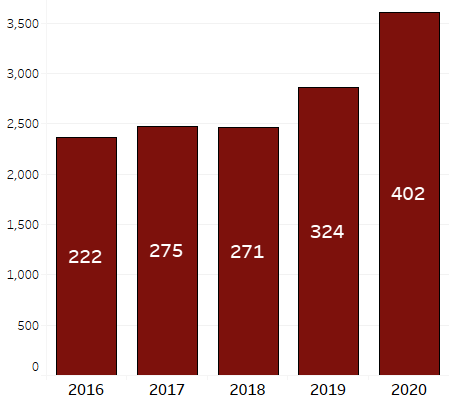
The ability to be published in high impact scientific journals will be one of the driving forces that propels IU School of Medicine to our goal of becoming a top 25 ranked medical school in the nation.
Here's a look at some of our recent highlights.

IU cancer center findings could reduce treatment-related complication for blood cancer patients
Researchers at the Indiana University Melvin and Bren Simon Comprehensive Cancer Center located at IU School of Medicine, published promising findings in the New England Journal of Medicine about preventing a common complication to lifesaving blood stem cell transplantation in leukemia. Read more here.

An all IU School of Medicine research team discovers a drug target and pathway for treating muscle and fat wasting in pancreatic cancer patients
A team of all Indiana University School of Medicine researchers have discovered a novel drug target to treat involuntary muscle and fat wasting – known as cachexia - in people with pancreatic cancer. Read more here.

A team of IU School of Medicine researchers discover a promising new way to potentially prevent and treat kidney infections
Ten IU School of Medicine researchers out of a team of eleven scientists, are responsible for the findings of a new study they conducted to investigate alternative ways to treat kidney infections. Their work, which is published in the high-quality research journal Nature Communications, examined how to utilize the kidneys’ own internal infection fighting capabilities to treat and even prevent kidney infections, with that knowledge that eventually antibiotics won’t work. Read more here.
IU School of Medicine researchers develop computer program to predict whether patients could be at high risk for Alzheimer’s and cancer
A group of IU researchers have developed a program called Multi-Omics Graph cOnvolutional NETworks (MOGONET) that integrates omics data – such as DNA, RNA and proteins – to help scientists get a comprehensive understanding of human diseases. MOGONET can also identify potential biomarkers for Alzheimer’s disease and cancers from the omics data, to predict who may be at higher risk. Read more here.
For IU School of Medicine Researchers who are federally funded (excluding the VA), mandatory data management plans are required by the school. The forms are award-based and due no later than August 31, 2021. Assistance with the requirement is available.

Tatiana Foroud, PhD
Executive Associate Dean for Research Affairs,
Indiana University School of Medicine
Executive Vice President of Academic Affairs for Clinical Research, IU Health
